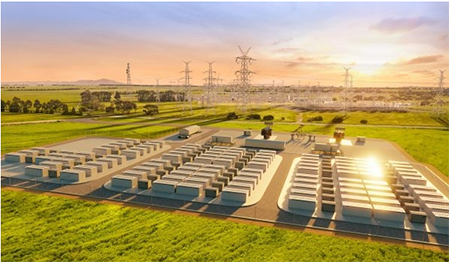Energy storage is a rapidly growing field that plays a crucial role in the shift towards renewable energy sources. With the increasing integration of solar and wind power into the energy grid, the need for effective energy storage solutions has become paramount. One such solution that has gained significant attention in recent years is the concept of an all-in-one energy storage system.
Defining the all-in-one energy storage system
An all-in-one energy storage system refers to a comprehensive and self-contained solution that combines various components and technologies to store and manage energy efficiently. It incorporates multiple functionalities, including energy generation, storage, conversion, and management, into a single system. The primary goal is to provide a holistic solution to address the intermittent nature of renewable energy sources and enable smooth integration into the existing energy infrastructure.
Components of an all-in-one energy storage system
An all-in-one energy storage system typically comprises three key components: energy generation, energy storage, and energy management.
1.Energy Generation: This component is responsible for capturing energy from renewable sources such as solar, wind, or hydro power. Solar panels or wind turbines are commonly used to convert sunlight or wind energy into electricity. The electricity generated is then fed into the storage system for later use.
2.Energy Storage: The second component involves storing the generated energy for later use, especially during times when the renewable source is not actively producing energy. Various storage technologies can be used, including batteries, compressed air storage, thermal storage, and pumped hydro storage. These systems allow excess energy to be stored and discharged when needed to ensure a consistent and reliable power supply.
3.Energy Management: The final component focuses on efficiently managing the stored energy and optimizing its utilization. Smart grid systems, advanced control algorithms, and energy management software play a crucial role in monitoring, controlling, and distributing stored energy according to demand and grid conditions. This maximizes the efficiency and reliability of the energy storage system.
Advantages of an all-in-one energy storage system
The concept of an all-in-one energy storage system offers several advantages over traditional energy storage approaches.
1.Simplified Integration: By combining various functionalities into a single system, the all-in-one approach simplifies the integration and installation process. It eliminates the need for separate systems for energy generation, storage, and management, reducing overall complexity and cost.
2.Increased Efficiency: The integrated nature of the system enables efficient energy transfer and reduces energy losses associated with multiple conversion steps. This results in higher overall system efficiency, making better use of the available renewable energy resources.
3.Enhanced Resiliency: An all-in-one energy storage system enhances the resiliency of the power grid by providing a reliable backup during power outages or instability. This is especially important in areas prone to natural disasters or grid failures, where continuous power supply is critical.
4.Scalability and Flexibility: All-in-one energy storage systems can be designed with scalability in mind, allowing for easy expansion or modification as energy demands change. They also offer flexibility in terms of deployment, as these systems can be installed in various locations, including residential, commercial, or utility-scale applications.
Current advancements in all-in-one energy storage technology
The field of all-in-one energy storage systems is continuously evolving, driven by technological advancements and the increasing demand for renewable energy integration. Some notable advancements include:
1.Next-Generation Batteries: Lithium-ion batteries have been widely used in energy storage systems due to their high energy density and efficiency. However, efforts are being made to develop next-generation battery technologies that offer even higher performance, longer lifespan, and increased safety. This includes solid-state batteries, flow batteries, and lithium-sulfur batteries.
2.Advanced Control Systems: The development of advanced control algorithms and energy management software enables more effective monitoring, control, and optimization of all-in-one energy storage systems. These systems can dynamically adapt to changing grid conditions and energy demands, leading to improved efficiency and reliability.
3.Hybrid Energy Storage Systems: Hybrid systems combine multiple energy storage technologies to leverage the benefits of each and enhance overall system performance. For example, a combination of batteries and compressed air storage can offer the advantages of both high power density and long-duration storage.
4.Blockchain Technology: The integration of blockchain technology into all-in-one energy storage systems can enable decentralized energy trading and enhance system transparency and security. This allows consumers to directly buy and sell energy with each other, promoting peer-to-peer energy sharing and reducing reliance on traditional energy providers.
Future prospects and challenges
The future of all-in-one energy storage systems looks promising, considering the increasing awareness and adoption of renewable energy sources. However, several challenges need to be addressed to ensure widespread implementation:
1.Cost-Effectiveness: Despite the decreasing cost of renewable energy technologies, the cost of all-in-one energy storage systems remains relatively high. Continued research and development efforts are needed to drive down costs and make these systems more economically viable.
2.Integration with Existing Infrastructure: Integrating all-in-one energy storage systems with the existing energy infrastructure requires careful planning and coordination. Interoperability standards and grid compatibility need to be established to ensure seamless integration and operation.
3.Environmental Impact: The production and disposal of energy storage components, especially batteries, can have environmental implications. Recycling and responsible disposal methods need to be developed to minimize the environmental footprint of all-in-one energy storage systems.
4.Regulatory Framework: Regulations and policies play a crucial role in facilitating the deployment and adoption of all-in-one energy storage systems. Clear guidelines and incentives from governments can encourage investment in these technologies and create a favorable market environment.
In conclusion, the all-in-one energy storage solution represents a comprehensive and integrated approach to storing and managing renewable energy. With further advancements in technology and supportive policies, these systems have the potential to revolutionize the energy landscape, accelerate the transition to a clean energy future, and create a more sustainable and resilient power infrastructure.










